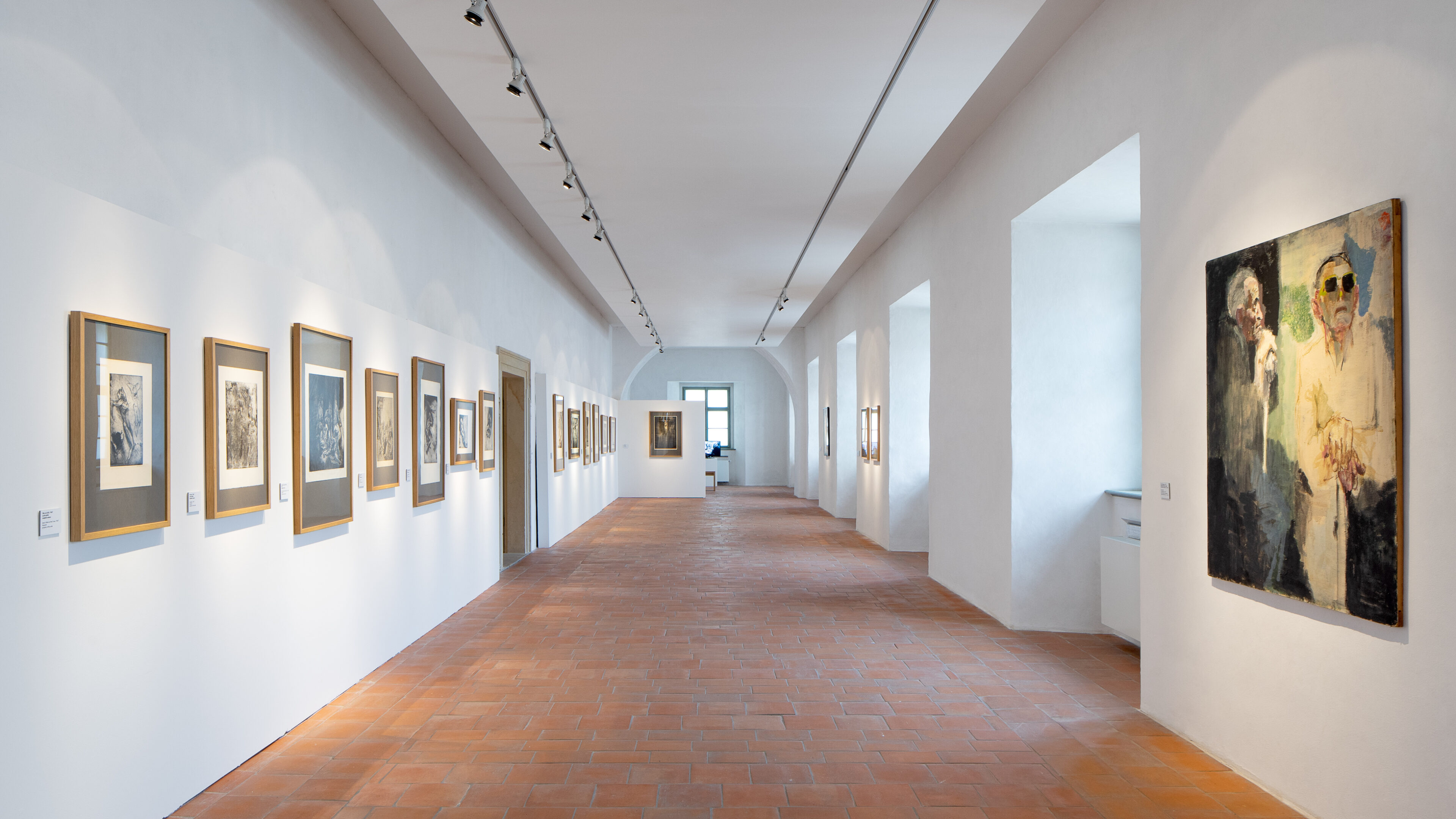Jiří Sozanský emerged on the art scene in the early 1970s, a period dominated by hard-line repression brought to bear by the post-1968 Czechoslovak regime.
17. 03. 2019

Jiří Sozanský emerged on the art scene in the early 1970s, a period dominated by hard-line repression brought to bear by the post-1968 Czechoslovak regime.
Silence tears at one’s ears
Everyone knows it and says nothing.
Their mouths have been gagged by the fear of life and death.
It’s January 1969
Even love hurts –
Which is why I’m crying.
Jan Zajíc, For Jan Palach
Jiří Sozanský emerged on the art scene in the early 1970s, a period dominated by hard-line repression brought to bear by the post-1968 Czechoslovak regime. His work can be described as an endless struggle between defiant humanist values and brutal ideological dogma. The starting point of his expression has always consisted in fusing the universal theme of man in extreme situations with the reality of authentic historical context. As a matter of principle, Sozanský always experiences at first-hand the places where unimaginable tragedies have occurred. In doing so, he has often literally walked through the rubble of civilisation’s self-destruction. In his art, he systematically explores the cynical evil of power mechanisms (whether those of Nazism or Communism) which he then starkly reveals and portrays with searing expressiveness.
The exhibition ‘Signum Actus / The Sign of an Act’ loosely follows on from the project ‘Extreme Situations’ that Jiří Sozanský staged at GASK in 2015. While ‘Extreme Situations’ dealt with the furies of war, this new project is based on how Sozanský and his generation were profoundly affected by the self-immolation in 1969 of Jan Palach and Jan Zajíc, who protested against continuing repression and against how Czechoslovak society was descending into a state of resigned indifference following the invasion of 1968. In a symbolic ‘arc’, the exhibition presents a series of Sozanský’s paintings, prints and drawings from the late 1960s and early ’70s on the theme of Job and the suffering of Christ together with the more recent series ‘16. 1. 1969’, ‘Place’, ‘Memorials’, ‘Signum Actus / Sign of an Act’ and ‘Locus Actionis / Scene of an Act’ inspired by the martyrial protest of Palach and Zajíc. We can find a mutual link between these series in the moral principle of the ‘suffering righteous man’.
Although he studied at the painting studio of František Jiroudek, Jiří Sozanský began devoting himself to printmaking as soon as his first year at the Prague Academy of Fine Arts, having met Ladislav Čepelák who was the professor of graphic art. Sozanský and Čepelák shared an admiration for Rembrandt, who had also been a primary source of inspiration for Čepelák. In his early prints, Sozanský entered into a profound dialogue with Rembrandt through his dramatic modelling of the figure, the intense dynamism of chiaroscuro as well as through his compassion for the fate of man. Sozanský created the Job series as a reflection on the deed of Jan Palach and it subsequently won the Jan Palach Prize for the academic year 1970-1971. The biblical theme of Job’s lament at his son’s murder by marauders from another land had powerful symbolic meaning for Sozanský in the light of events at that time. The second painting from the series ‘From the Life of a Blind Man’ (1971) in fact also relates to the story of Job.
Sozanský’s series of large-format drawings from 2013-2017 that we are presenting at this exhibition were also created as a reflection on Jan Palach’s sacrifice. The ‘16. 1. 1969’ series (whose title refers to the day Palach set fire to himself) is chiefly focused on the psychological drama of his deed. The ‘Place’ series consists of conceptual studies for an architectural design for Palach’s family home in Všetaty and monument on Wenceslas Square. These designs aren’t meant to implemented, but rather represent a free and idealised working of the given concept. Sozanský’s bronze sculptures entitled ‘Memorials’ (2018) have their starting point in his drawn architectural visions. The ‘Signum Actus’ (2017) series began with a period photograph of Jan Palach that Sozanský gradually painted over, shifting the meaning of the image from outward descriptiveness to a more inward expression of abstracted drama. The ‘Locus Actionis’ (2018) series is a similarly worked portrait of Jan Zajíc. The determining factor in the last two series mentioned is how the bodies of both young men left tangible evidence in the form of physical traces on adjacent surfaces following the act of self-sacrifice. This ‘residual record’ of bodily presence could be compared to the martyrial symbolism of the Turin Shroud or the human shadow etched into stone stairs by the exploding atom bomb in Hiroshima.
The exhibition ‘Signum Actus / The Sign of an Act’ is being held to mark the 100th anniversary of the founding of the independent Czechoslovak state and the 50th anniversary of the sacrifices of Jan Palach and Jan Zajíc. As always with Jiří Sozanský, it is not a formal commemoration of historical anniversaries but a thought-provoking reflection on their topical meaning for the society of today.
Jiří Sozanský was born in Prague on the 27th June 1946. Between 1960 and 1963 he trained as a bricklayer and then worked as a bricklayer until 1967. Between 1967 and 1973 he studied at the Prague Academy of Fine Arts under Prof. František Jiroudek. His versatile work includes drawing, printmaking, painting, sculpture, installations, environments and film documentaries. His artistic credo is ‘Only a free person is the measure of all values.’